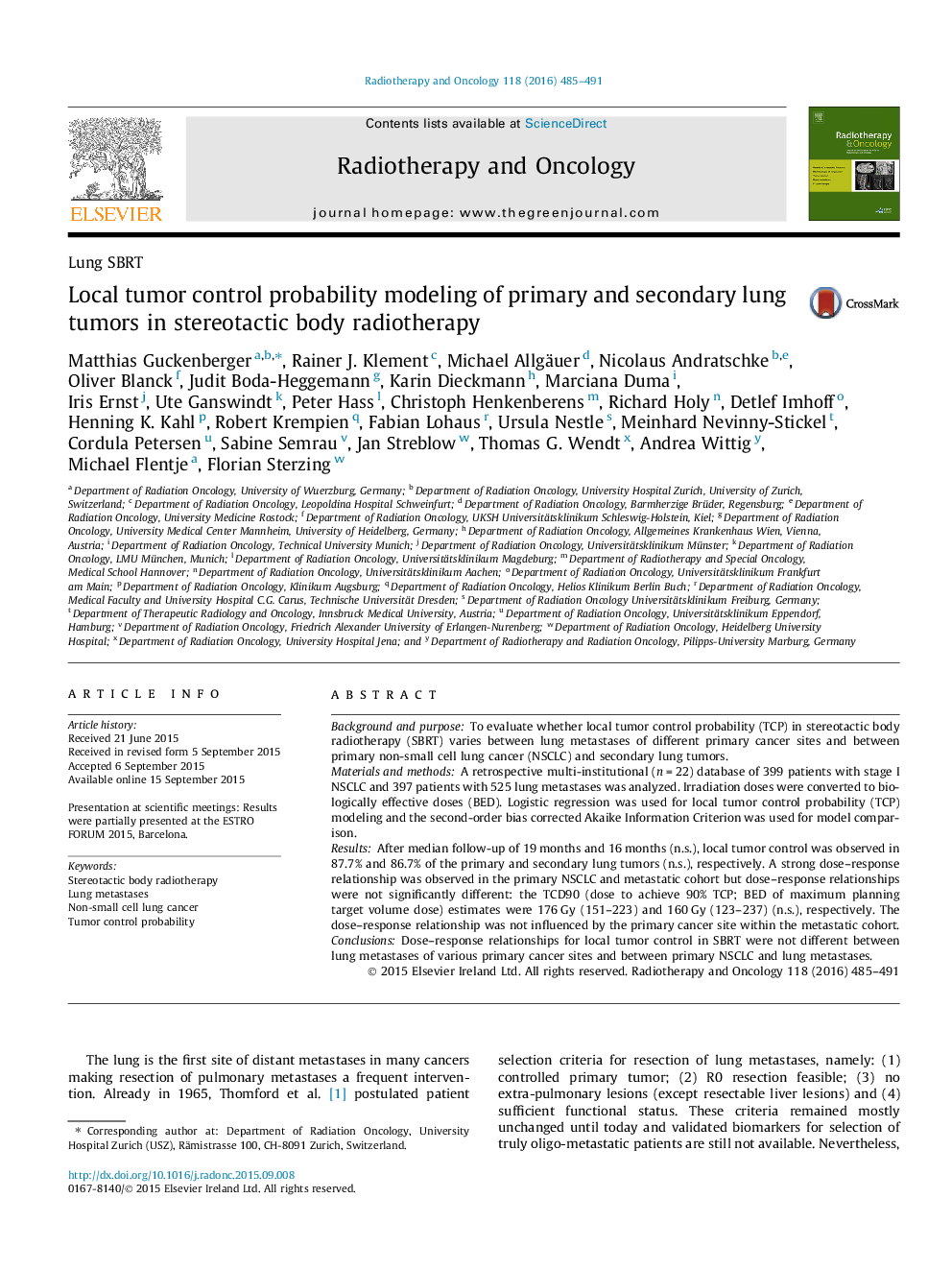| کد مقاله | کد نشریه | سال انتشار | مقاله انگلیسی | نسخه تمام متن |
|---|---|---|---|---|
| 2157199 | 1090768 | 2016 | 7 صفحه PDF | دانلود رایگان |
Background and purposeTo evaluate whether local tumor control probability (TCP) in stereotactic body radiotherapy (SBRT) varies between lung metastases of different primary cancer sites and between primary non-small cell lung cancer (NSCLC) and secondary lung tumors.Materials and methodsA retrospective multi-institutional (n = 22) database of 399 patients with stage I NSCLC and 397 patients with 525 lung metastases was analyzed. Irradiation doses were converted to biologically effective doses (BED). Logistic regression was used for local tumor control probability (TCP) modeling and the second-order bias corrected Akaike Information Criterion was used for model comparison.ResultsAfter median follow-up of 19 months and 16 months (n.s.), local tumor control was observed in 87.7% and 86.7% of the primary and secondary lung tumors (n.s.), respectively. A strong dose–response relationship was observed in the primary NSCLC and metastatic cohort but dose–response relationships were not significantly different: the TCD90 (dose to achieve 90% TCP; BED of maximum planning target volume dose) estimates were 176 Gy (151–223) and 160 Gy (123–237) (n.s.), respectively. The dose–response relationship was not influenced by the primary cancer site within the metastatic cohort.ConclusionsDose–response relationships for local tumor control in SBRT were not different between lung metastases of various primary cancer sites and between primary NSCLC and lung metastases.
Journal: Radiotherapy and Oncology - Volume 118, Issue 3, March 2016, Pages 485–491
